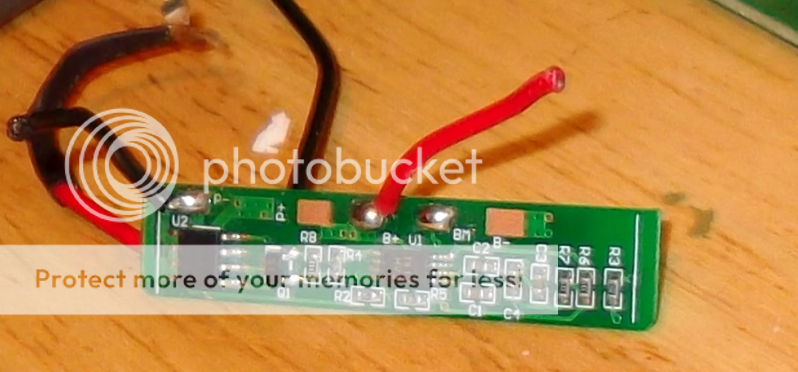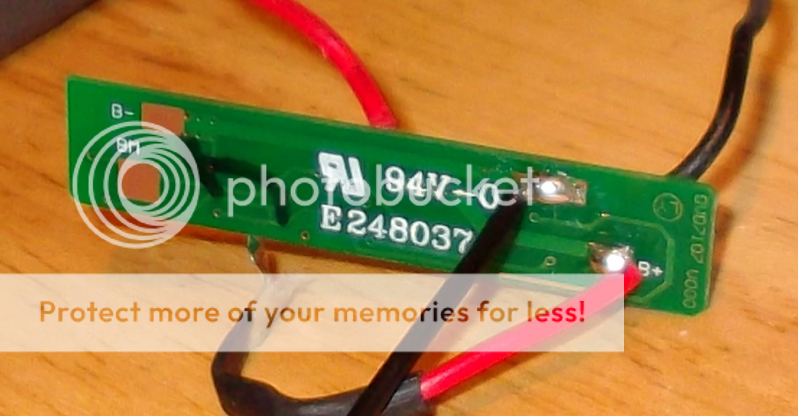wwwyzzerdd
Member
Hi, I'm new here. I've got a question about a 6000mah 7.4v battery pack with a built in protection circuit. I pulled it apart about a month ago to rewire it so it would fit in my project better. Well I never wrote down how it was wired, and I have forgotten how it was wired together. It has 4 cells, each one 3.7v, so a set of 2 cells must have been wired in parallel, and then wired in series to the other set of 2.. right? Just want to get a little clarification on that. Being that it was a 7.4v pack, I'm not sure that it would work any other way..
Also, the pcb for the protection circuit is pretty confusing to me. I'm not sure if I'll even be able to use it safely. Can't find any info on it because this was a dvd player battery pack. There is a pad on it labeled "BM". I have no clue what BM means. It had a yellow wire soldered to it, if that means anything. I want to say its the com pad for the batteries to be wired in series, but I don't know. I just want to be sure before I start wiring it up, I'd rather not blow the batteries up.
I have 2 sets of 2 batteries, each set consist of 2 3.7v cells that I wired together in parallel, and I have both sets wired together in series. If thats right, then all I need is the charge protection circuit. Hoping to find some clarification, and maybe an idea of how this pcb is supposed to be wired up.
I included pictures of the pcb just to show exactly what I'm working with. I've never messed with rewiring battery circuits, so forgive me if i seem little ignorant. I'll greatly appreciate any help I can get


Also, the pcb for the protection circuit is pretty confusing to me. I'm not sure if I'll even be able to use it safely. Can't find any info on it because this was a dvd player battery pack. There is a pad on it labeled "BM". I have no clue what BM means. It had a yellow wire soldered to it, if that means anything. I want to say its the com pad for the batteries to be wired in series, but I don't know. I just want to be sure before I start wiring it up, I'd rather not blow the batteries up.
I have 2 sets of 2 batteries, each set consist of 2 3.7v cells that I wired together in parallel, and I have both sets wired together in series. If thats right, then all I need is the charge protection circuit. Hoping to find some clarification, and maybe an idea of how this pcb is supposed to be wired up.
I included pictures of the pcb just to show exactly what I'm working with. I've never messed with rewiring battery circuits, so forgive me if i seem little ignorant. I'll greatly appreciate any help I can get


